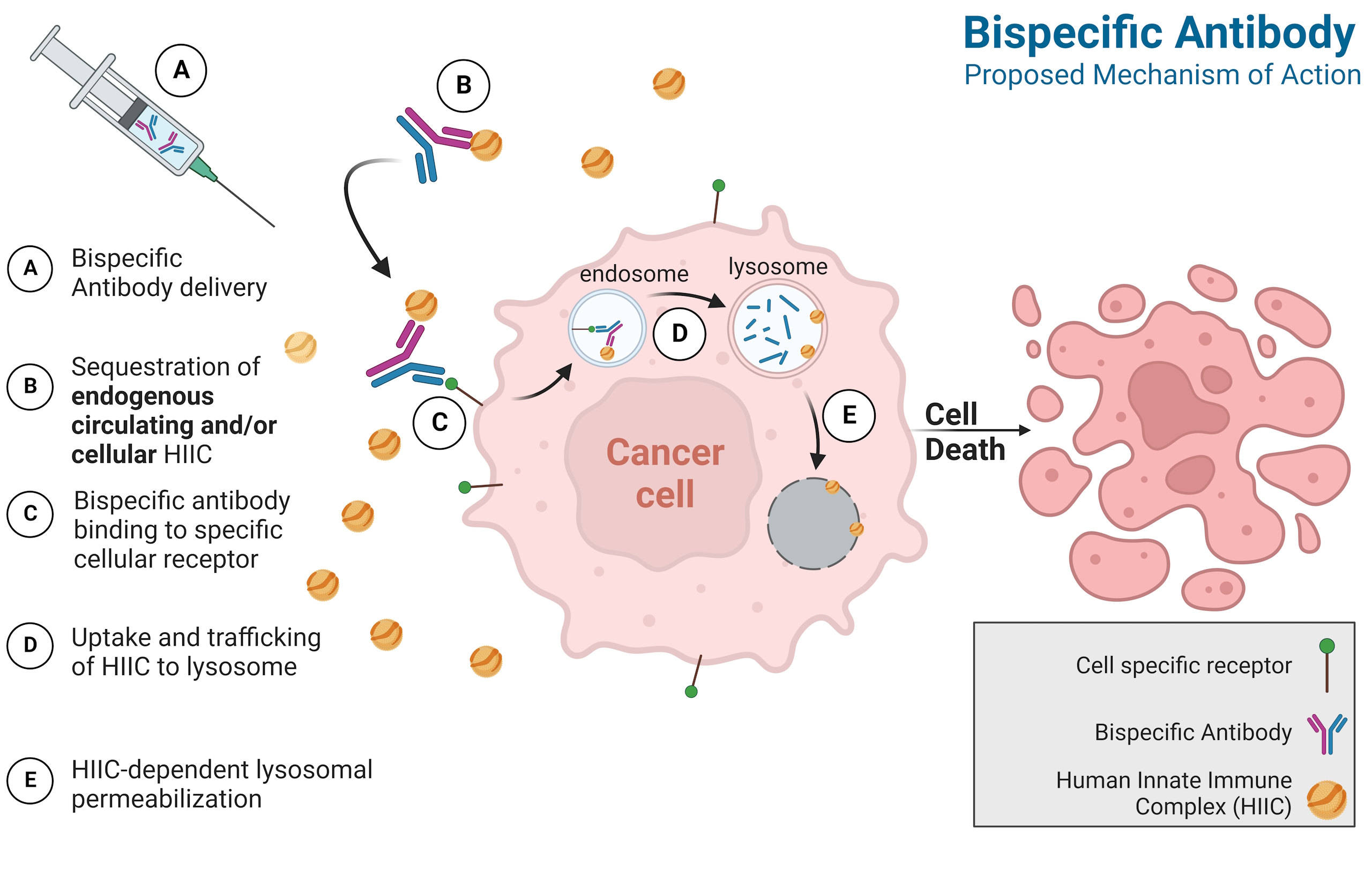Pipeline Program
ANN-01P
ANN-01M is a bispecific antibody in pre-clinical development targeting mesothelin (MSLN) on pancreatic ductal adenocarcinoma (PDAC) and other MSLN+ tumors.

Pancreatic Ductal Adenocarcinoma Landscape
Pancreatic ductal adenocarcinoma (PDAC) accounts for >90% of pancreatic cancers and is on track to become the #2 cause of U.S. cancer death by 2030. The American Cancer Society estimates ~67,440 new U.S. cases and ~51,980 deaths in 2025, reflecting late presentation and limited screening options.
Most patients present with unresectable or metastatic disease. Despite intensive regimens (FOLFIRINOX; gemcitabine+nab-paclitaxel), median overall survival in advanced PDAC is typically <12 months. Dense desmoplastic stroma, immune exclusion, and early micrometastatic spread demand off-the-shelf mechanisms that do not rely on patient T-cell fitness and can function within a hostile tumor microenvironment.
Incidence Snapshot
Mesothelin Biology & Relevance
Mesothelin (MSLN) is a surface protein found at very low levels in healthy tissues but highly expressed in most pancreatic cancers (around 80-90%). It binds to MUC16/CA125, helping cancer cells stick and spread. Because it’s common in tumors and rare in vital tissues, MSLN serves as both a useful biomarker and an effective target for drug delivery.
ANN-01P leverages MSLN internalization to ferry endogenous ApoL1 into tumor lysosomes, aiming for immune-cell-independent kill while avoiding systemic payload toxicities and manufacturing constraints typical of cell therapies.
ANN-01P Program & Research Plan
Mechanism & Rationale
- ANN-01P bispecific architecture captures circulating ApoL1 and traffics it into mesothelin-positive PDAC cells, triggering lysosomal pore formation and tumor cell lysis independent of T cells or Fc-effector reliance.
Current Progress (pre-clinical)
- In-vitro: Specific binding to MSLN+ PDAC lines, internalization, ApoL1-redirected killing; no activity in MSLN-negative controls.
Translational Models (in flight / planned)
- Emory/Winship partnerships for PDAC biospecimens, PDXs.
- Custom transgenic human ApoL1 x human mesothelin mouse models enabling exposure/efficacy and safety studies in a disease-relevant background.
Near-Term Milestones
- Complete NSG mouse efficacy studies and ApoL1 / human mesothelin transgenic mouse evaluations.
- Complete transgenic model characterization and pilot tox studies/efficacy studies.
